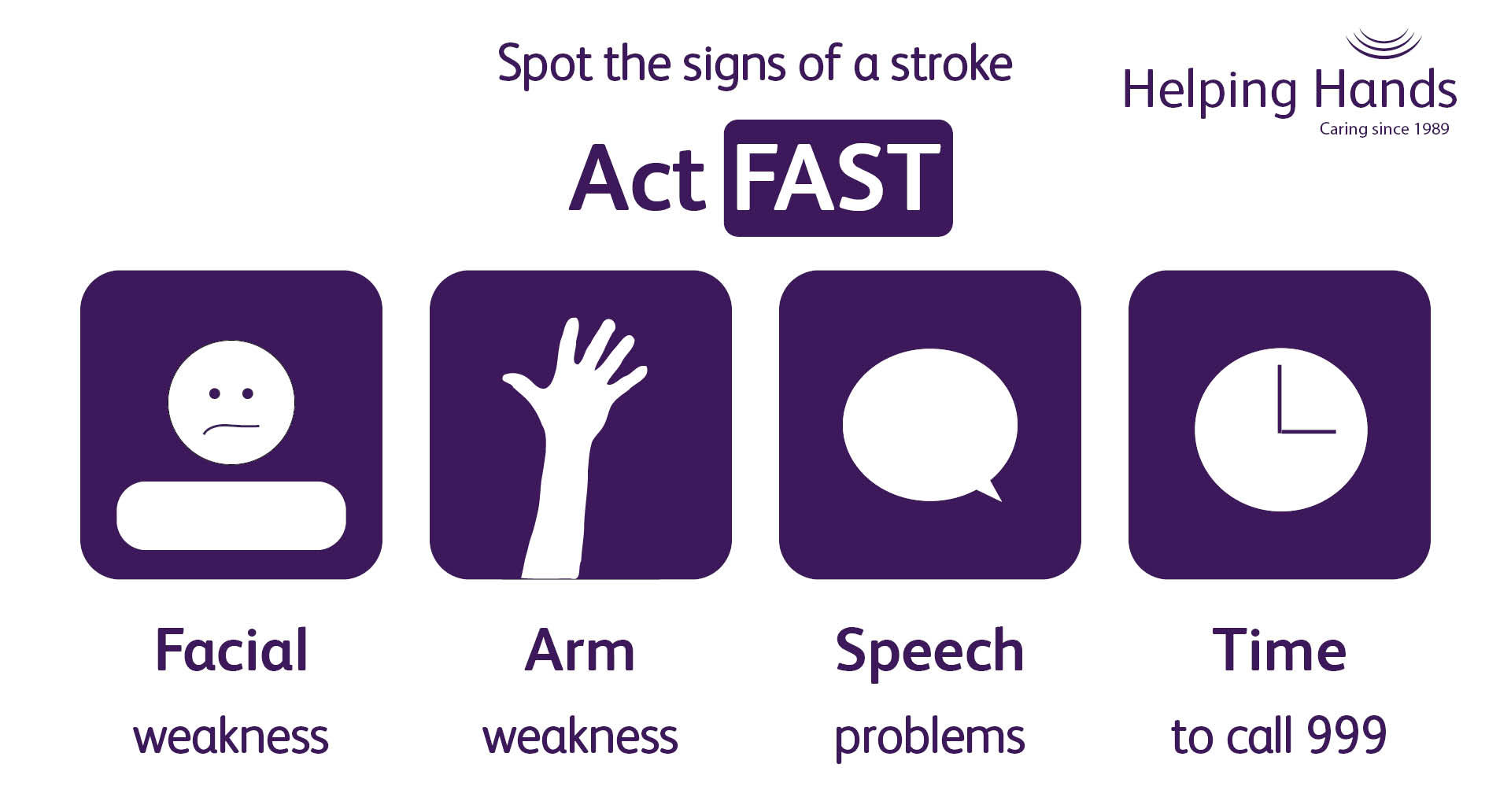According to the Stroke Association, approximately 100,000 people experience a stroke each year. Many people are able to make a good recovery, but the impact of a stroke can leave a devastating impact on the individual and the family that surrounds them. In order to combat this impact, it’s important that a stroke is recognised and treated quickly, which is why we – in conjunction with our charity partner of the year, the British Heart Foundation – have created this short article on understanding stroke symptoms and when to seek help.
What Is A Stroke?
A stroke is when the blood flow to the brain is disrupted, restricting oxygen to the brain cells which causes them to become damaged. The impact of a stroke will often depend on the severity of the stroke.
There are a number of different types of stroke, including ischemic stroke (blockages) and hemorrhagic stroke (bleeds). There is also Transient Ischemic Attack (TIA), which is where blood flow is disrupted but, unlike a stroke, it returns on its own, TIA act as a warning sign of a stroke.
An ischaemic stroke is the most common – accounting for approximately 87% of all strokes. These occur when a blood clot stops the flow of blood and oxygen to the brain. There are different reasons why a blood clot may cause a stroke. One cause is when fatty deposits build up on the inside walls of the arteries, particularly our neck and brain. This can lead to blood clots forming around broken fatty deposits, which could break off and block blood flow.
Haemorrhagic strokes make up approximately 13% of stroke cases, occurring when a blood vessel bursts and bleeds into the brain. A hemorrhagic stroke can often happen as a result of high blood pressure, which weakens the arteries and makes them more likely to rupture.
A TIA, also referred to as a mini-stroke, is a temporary blockage of blood flow to the brain. A TIA can cause sudden symptoms, such as speech and visual disturbances, but often the effects don’t last very long. However, it is still important that urgent medical advice is sought if you or your loved one think you may have experienced a TIA.

What Are The Signs Of A Stroke?
The main symptoms of a stroke can be remembered with the word FAST:
Face – their face may have dropped on one side, they may not be able to smile, or their eye or mouth may have drooped on one side.
Arms – they may have weakness in one arm, meaning they are not able to lift both arms up.
Speech – their speech may be slurred, or they may not be able to talk at all. They may also have difficulty understanding what you are saying.
Time – if you notice any of these signs, it’s time to call 999.
However, the word FAST, also has two meanings here – because timing is critical if you or your loved one experience a stroke. The longer the wait for treatment, the bigger impact the stroke can have on an individual’s speech, movement and independence, so it’s not just important to think FAST, but to act FAST, too.

Unusual Symptoms
Thinking FAST helps us to easily identify the obvious signs of a stroke, but there are a number of less common symptoms that are important to bear in mind, too.
These additional symptoms may include:
- An acute headache that comes on suddenly and causes very severe pain
- Loss of consciousness
- Complete paralysis on one side of the body
- Loss of sight or blurred vision
- Dizziness
- Confusion
- Problems with balance and co-ordination
If you or your loved one are concerned after experiencing one or more of these symptoms, it’s important to seek medical advice in order to rule out stroke or another cause.
Differences between a stroke and transient ischaemic attack (TIA)
A transient ischaemic attack (TIA), which is also known as a mini-stroke, presents the same signs and symptoms as a stroke. However, unlike a stroke, they tend to last for much shorter periods of time before stopping completely. Although the symptoms do improve or go away with a TIA, they should not be ignored as urgent medical attention may be required.
Whilst a TIA is technically not referred to as a stroke, it does act as a serious warning sign of a problem with the blood flow to your brain and it may mean that you are likely to experience a stroke in the near future.
For more information on whether stroke symptoms are permanent, please click here.

Helping Hands
If you or your loved one have experienced a stroke and are looking for a little extra support and care at home, Helping Hands offer person-centred stroke aftercare. Whether you are in need of a helping hand during your rehabilitation, or your loved one has experienced a loss of independence following a stroke, we offer bespoke support ranging from 30-minute visits to full-time live-in care. We’ll work closely with you and your loved ones to establish the right level of care to suit your needs, offering a helping hand whenever you need it.
For more information, please feel free to email or simply request a callback so that we can call you at a suitable time.
Page reviewed by British Heart Foundation, on November 15, 2021
